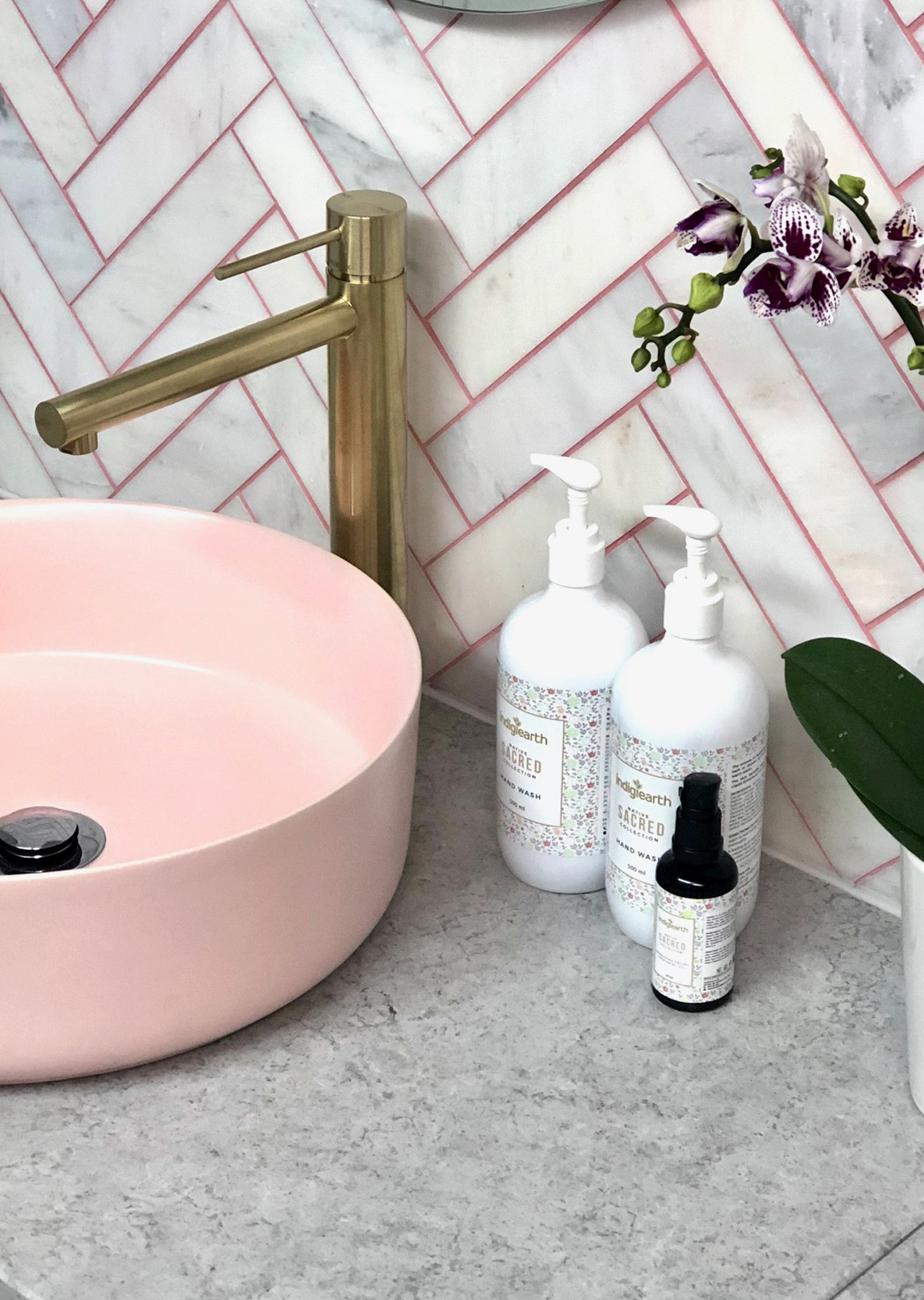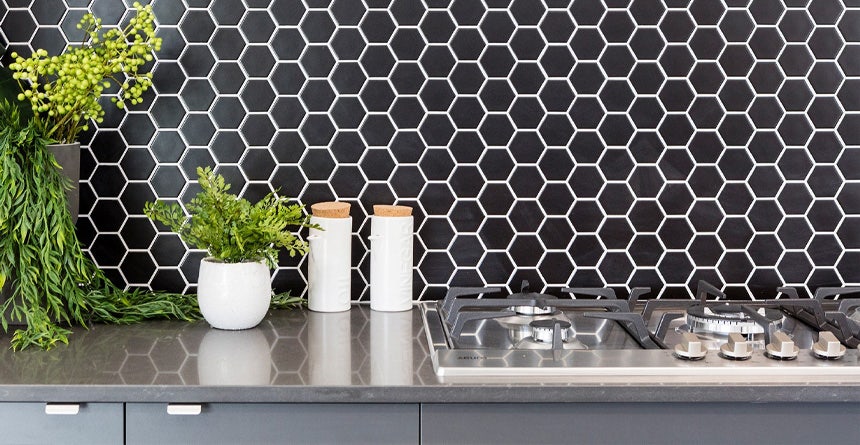
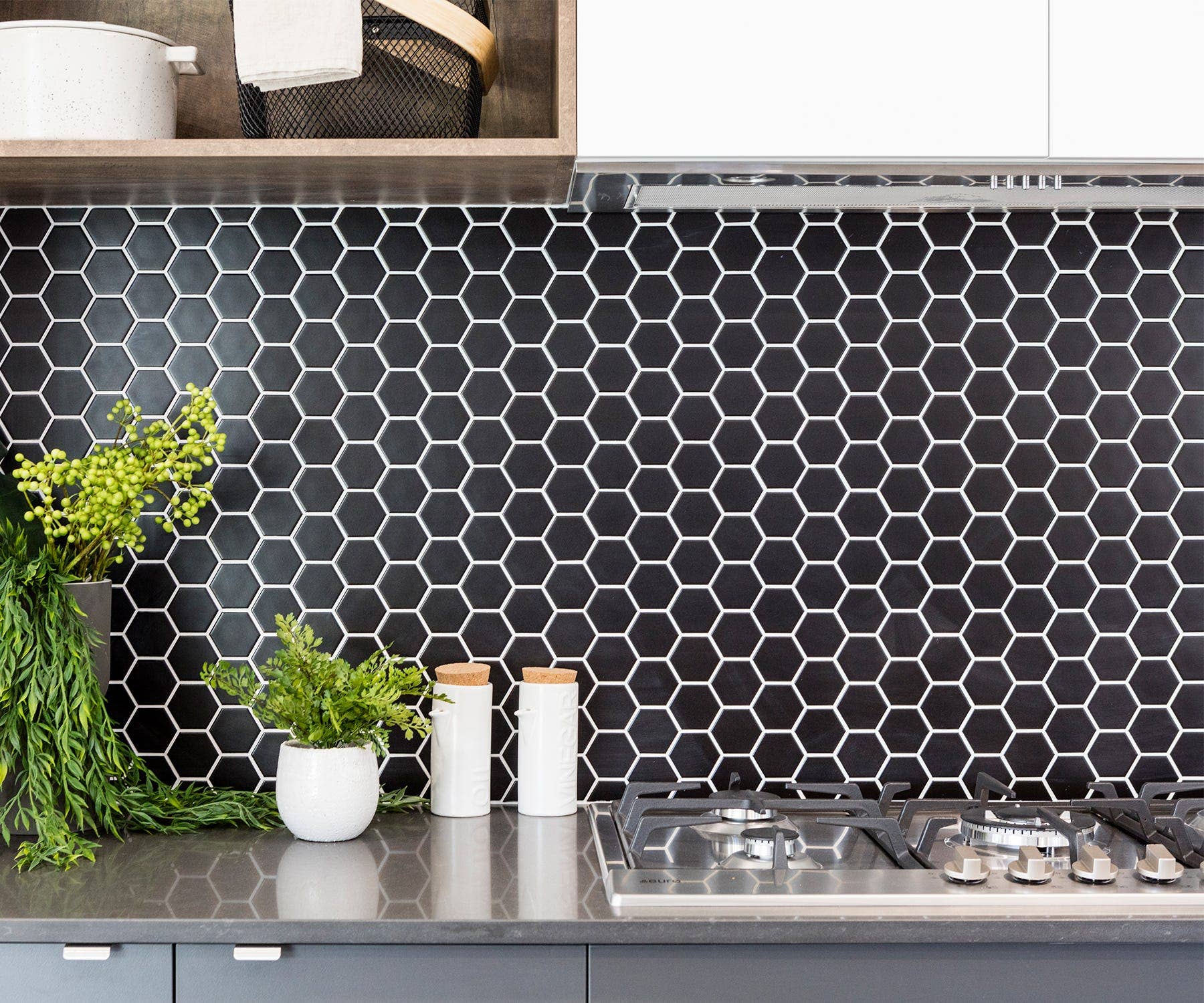

DIY Tiling
Everything About Grouting Tiles
While grouting tiles is not a difficult process, a well-grouted job can make all the difference to a finished project.
Learn how to grout tiles for the perfect finish to the perfect DIY tile project with this quick four-step guide from Beaumont Tiles on How to Grout.
What is grouting?
Tiling grout is the material that fills the spaces between the tiles on your wall or floor.
Grout comes in several different forms from cement based to epoxy. Grout is available in a vast array of colours to compliment the tiles that you have selected from your home. Whichever option you choose, follow the manufacturer's instructions on how to mix and apply the grout.
How do you grout?
Grouting is one of the simplest parts of DIY tiling. There’s no secret to learning how to grout tiles: you just need to be prepared to work a little hard. Make sure that your adhesive has set firmly before you start. Read on to learn how to grout tiles step by step
Our Hot Tip: Want to learn more about Grouts & Adhesives? We'll even help you choose the best type of grout and grout colour for your project
click here to read more.
Our Hot Tip: Hmmm....your questions still aren't answered? From expert advice before you begin to installation tips and after-care, Dr. Grout and Beaumonts are here to help
click here to read more.
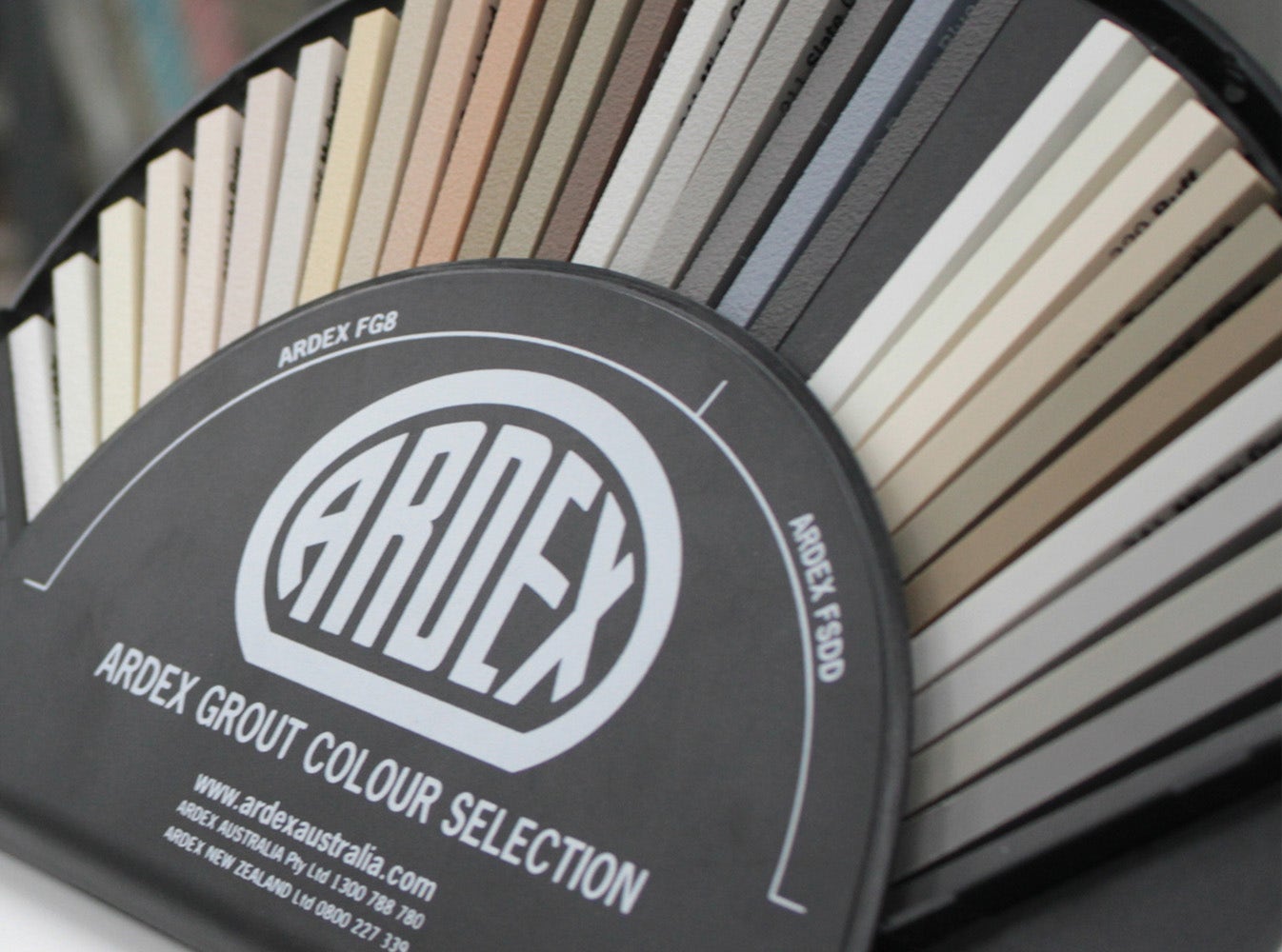

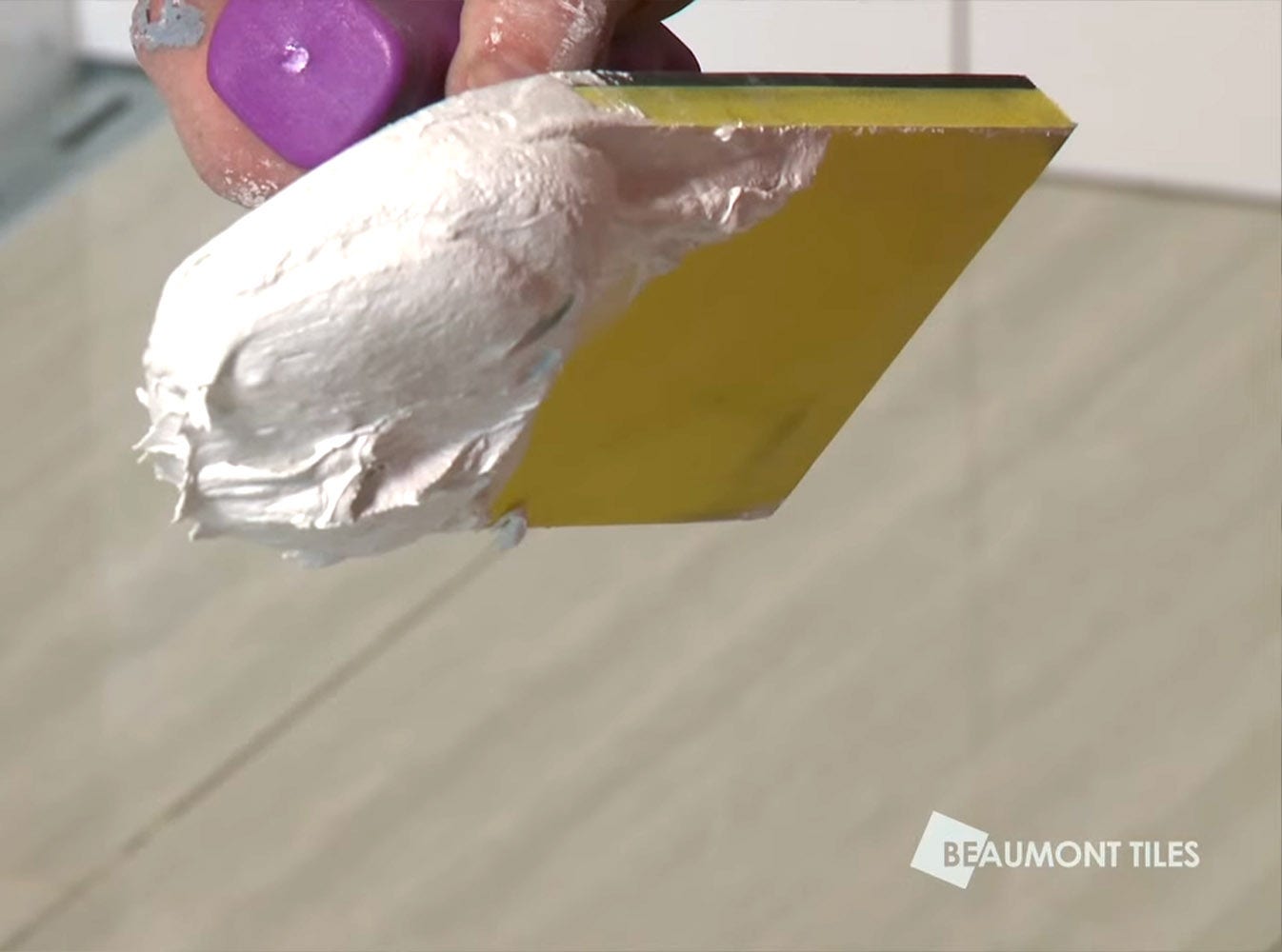

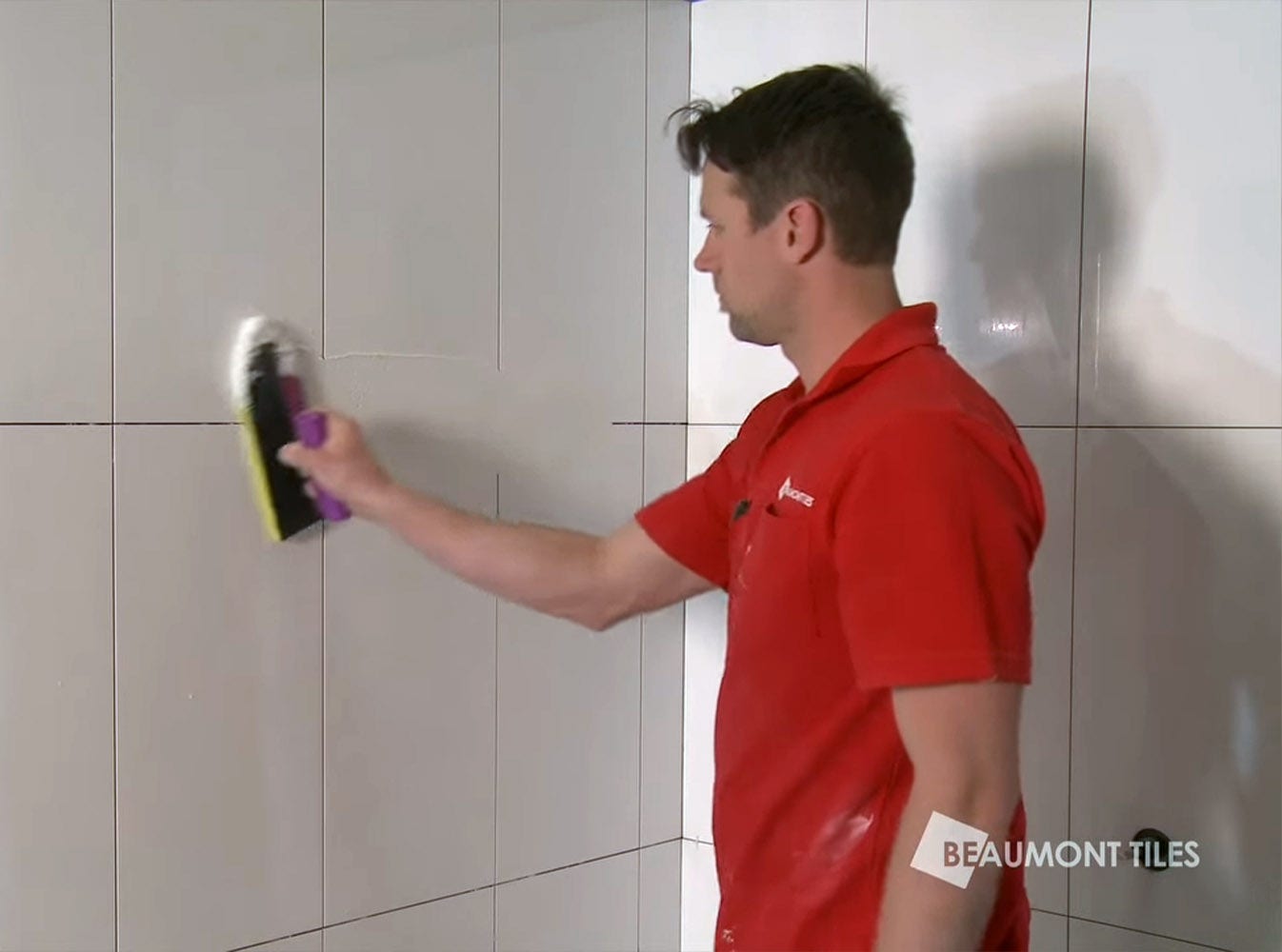

Step One: Mix the Grout
When mixing the grout, add the water first and then the powder to ensure a thorough mix with no lumps. Follow the instructions on your packet and mix to a thick paste-like consistency.
Step Two: Apply the Grout
How to apply grout to tiles using a grouter or grout float.
Push the grout into the joints and compress by wiping over at an angle across the joints. Do not apply grout to the corners where walls meet floors and where two walls meet. You will need to apply silicone here. See photos on how to grout wall tiles.
Step Three: Clean the Tiles
How long after tiling can you grout?
Always allow the grout to dry and for a film to set on the face of the tiles. Dry times vary dependant on weather conditions. Then remove the excess grout.
Clean up with a slightly damp sponge. Don’t wash the floor or get it overly wet. The trick here is to lift the film off the tiles without wetting the actual grouted joint.
Keep rinsing your sponge as you go and change your water regularly.
Step Four: Time to dry buff!
After most of the grout has been removed from the tiles, give them another once-over with the damp sponge. Only when the grout is completely dry buff over the tiles with clean, dry cloth or sponge. If there is still dried grout present, a cement residue remover may be needed.
Once the grout is completely dry after 48 hours, we recommend applying a grout sealer.
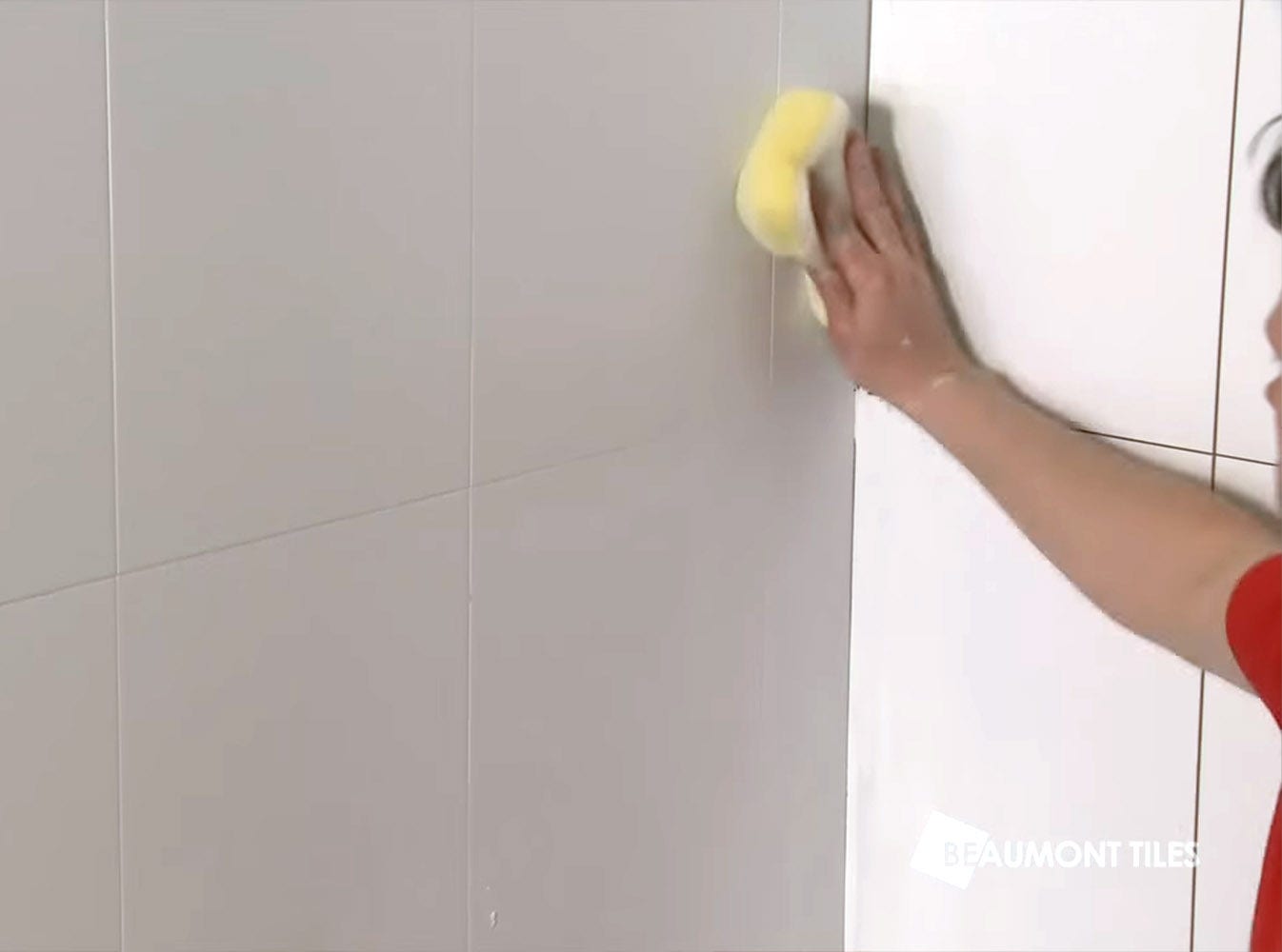

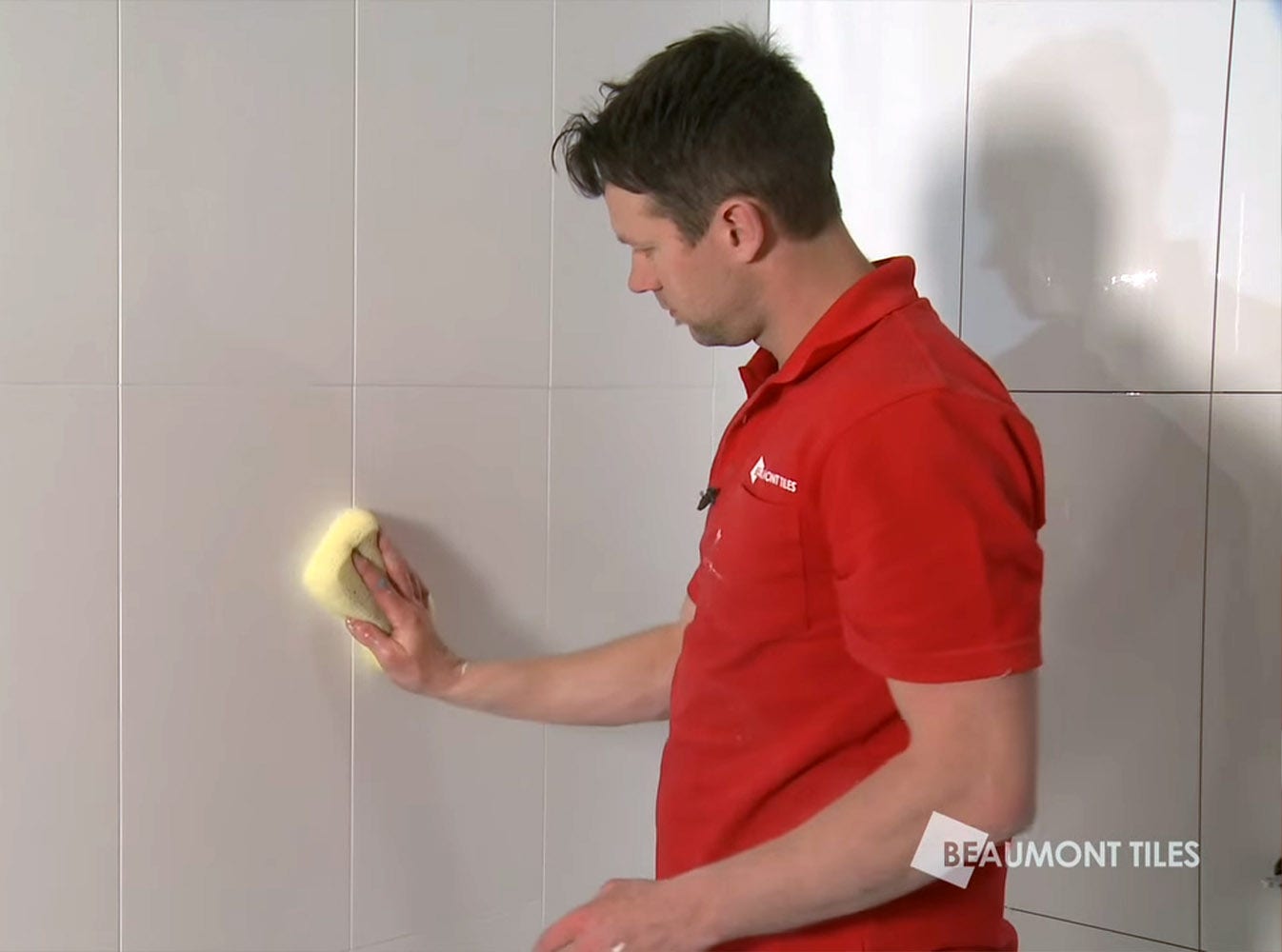

How To Grout & Silicone
Grout – those thin lines you see between each tile on your walls or floor is a vital part of any well-done tiling job.
While tiles themselves are impervious to water, moisture would still be able to make its way under or behind them unless the gaps between tiles are sealed with the right grout. Grouting your tiles also helps to strengthen the whole installation.
Luckily, grouting is one of the simplest parts of DIY tiling. There’s no secret to learning how to grout: you just need to be prepared to work a little hard.
Watch the whole process right here with one of our tiler mates.
Our Hot Tip: Our experts have created a handy DIY guide that will be your best friend throughout your DIY journey - DOWNLOAD IT HERE.
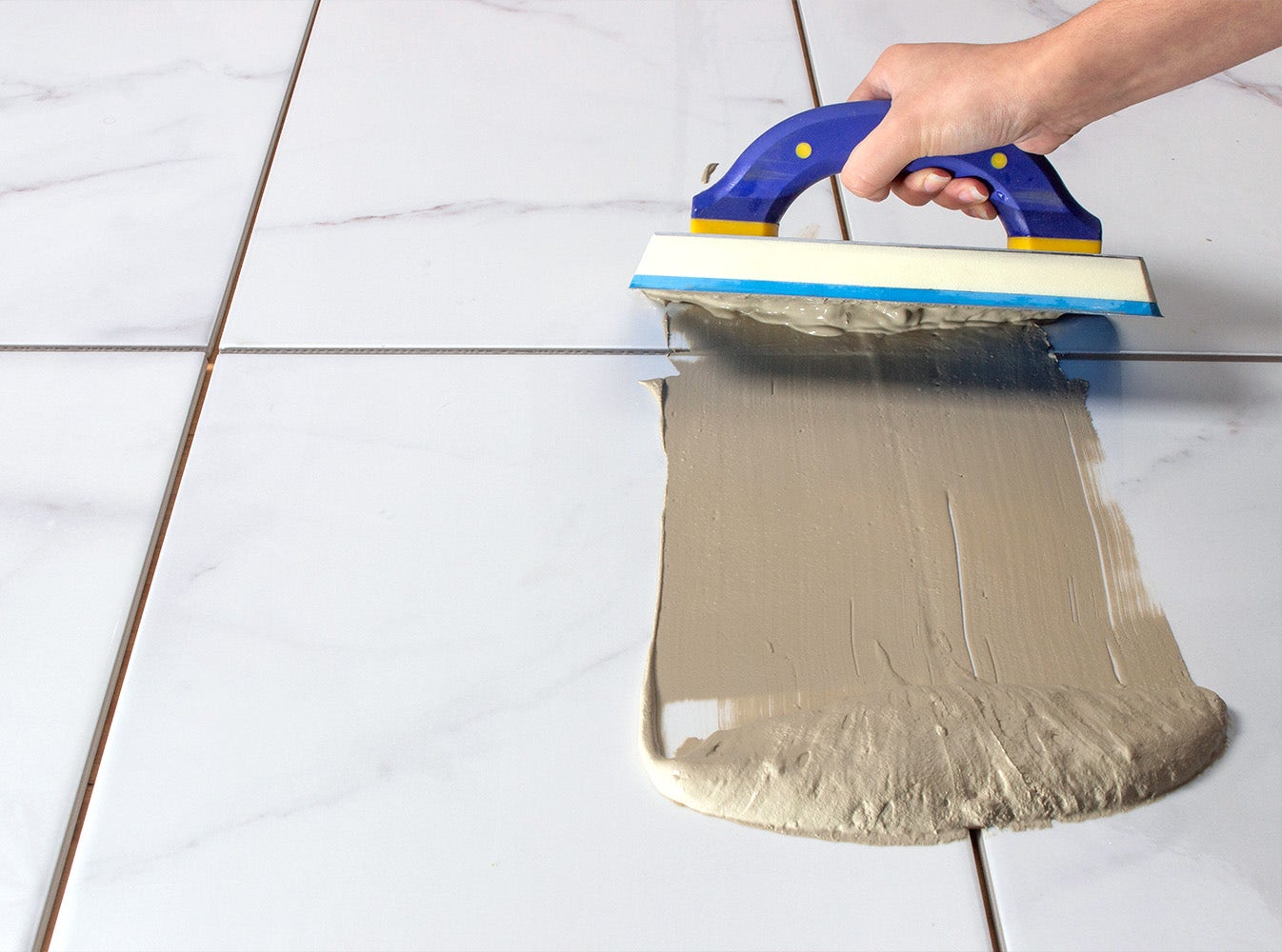

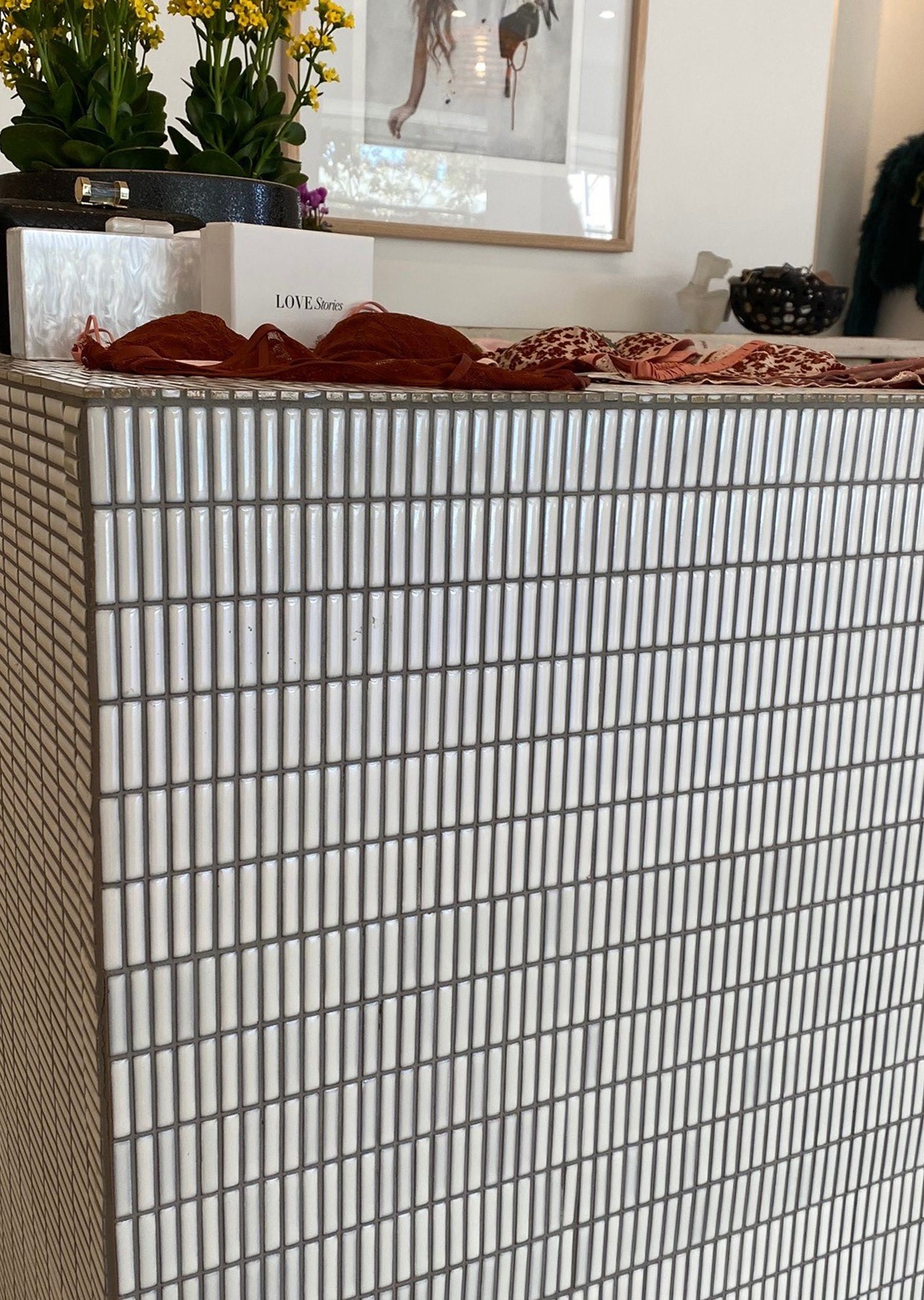

Grouting Tiles - Frequently Asked Questions
How do you apply grout to tile?
Apply the grout to the tiles using a grouter.
Push the grout into the joints, out best tip is to compress by wiping over at an angle across the joints. Be careful not to apply grout to the corners where walls meet floors and where two walls meet. You will need to apply silicone here.
What is the easiest way to grout?
Your grout will go on the easiest if you prepare your surface really well. Remove of any excess adhesive and bedding mortar that might have been missed at tile installation, and take out your spacers. Clean your tiles as many times as needed with a clean damp sponge before you start grouting.
How long do you leave grout before wiping?
Always allow the grout to dry and for a film to set on the face of the tiles. Dry times vary dependant on weather conditions. Then remove the excess grout with a clean sponge or cloth.
How long does tile grout take to dry?
Your tile grout might take approximately 24 hours to dry, but it will be completely dry after 48 hours. The weather and humidity are big influences in this.
What happens if you don't grout tiles?
Grout has many different purposes, the main one is to protect the tiles from chipping or even breaking. Tiles do actually move along with the expanding and contracting of the building, and they need to be protected from friction. A flexible grout is very helpful in keeping your tiles safe and sound.
Other reasons are to prevent dust and debris settling in the gaps between the tiles, and also grout can visually blend any inconsistencies between each tile, especially tiles with a handmade look.
Can you put new grout over old grout?
The short answer is no, there isn’t a way to put a band aid on your grout issues, you will need to remove a minimum of 3mm of the grout with a grout remover saw and then regrout your tiles. The upside is that your tiles will look amazing after a regrout, it’s as good as facelift!
Do I have to remove all the old grout before regrouting?
It is possible to remove a minimum of 3mm of grout with a grout remover saw before regrouting, but the best results are always to completely replace the grout. If your grout isn’t in place properly, it could cause water damage to your tiles or bathroom.
How many coats of grout do I need?
The good news is, unlike paint or nail polish, you only need one application of grout. How good is that!
Do you have to seal grout?
It is a personal choice to seal grout or not, but we feel that it is well worth it. There are time saving and aesthetic benefits of sealing your grout, and it is as easy as painting in a straight line. Sealing your grout protects it from dirt, dust, helps prevent mould and bacteria. It also helps to prevent fading and keeping your grout looking its best.
What is the best way to seal grout?
Firstly, make sure that your grout is properly dried, we suggest 72 hours after grouting. If you are sealing old grout, make sure it is completely clean and dry. Then apply the sealant according to the manufacturer's instructions on the product you are using, we recommend the Miracle Tile, Stone and Grout Sealer or the Miracle 511 Spray-On Grout Sealer.
In general, apply Sealer to all grout with a thin paintbrush. Any excess sealer that gets on the surface should be wiped off with a clean towel before it dries.
How do you fix grout between tiles?
Always start with cleaning the area where the damaged grout is. Remove the grout that is damaged or cracked with a grout remover saw, be careful not to scratch the tiles. Then follow our easy instructions on how to grout. A hot tip tiles over timber floors is to use a grout booster as it has increase adhesion in situations where substrate is prone to movement. A grout booster is also amazing for swimming pool grout.
What kind of tile does not require grout?
The only tile that doesn’t require grout is a 20mm thick paver tile, these can dry-lay or wet-lay, or they can be laid on a height adjustable pedestal system.
What can I use instead of a grout float?
We highly recommend just using a grout float or grouter, as it is made of rubber to protect your tiles and do the best job on compacting grout between the tiles.
What will dissolve tile grout?
There are a wide variety of things you can try, including good old vinegar. But we recommend using the KF Cement Residue Remover, as it is nearly odourless and does not develop any vapours. It is a highly active cleaning concentrate based on a special composition of acids and supporting agents.
Does grout help hold tiles in place?
Although the grout does give a level of rigidity and strength to an installation. The bed of adhesive is what holds the tile in place.
Can I use silicone instead of grout?
We very much recommend that you use silicone in the joints and corners of your tile installations. Flexible grout is definitely your go to for most other gaps between tiles.
Can you lay granite tile without grout?
We recommend that natural stone is sealed before installation and grouting between your granite is a must.
Can you touch up grout?
If your grout is showing its age, and letting down the overall look of your bathroom, you may want to touch up your grout. Remove a minimum of 3mm from your grout with a grout remover saw, making sure to protect your tiles from scratching. Then follow our easy instructions on how to grout.
Can you change the colour of grout without regrouting?
Yes it is possible to change the colour of grout without re-grouting, there are products on the market that can do this.
